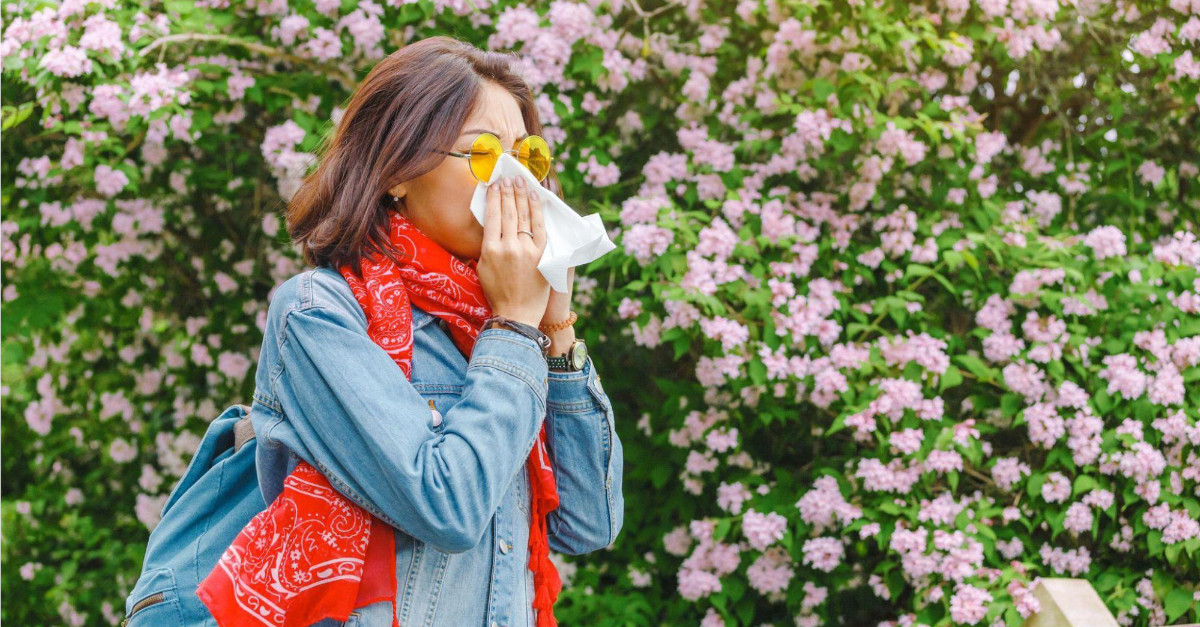At best, allergy symptoms can be a nuisance. At worst, they can leave you feeling miserable and upend your daily routine. Spring allergies are typically caused by pollen or mold and can trigger symptoms like runny nose, eye irritation, coughing, and an itchy throat.
Fortunately, there are steps you can take to limit the effect allergens have on you and your family this season. Here are a few tips to try.
1. Watch Pollen Counts
Monitoring the pollen count in your area will help you decide whether it’s a good idea to venture outside or if you’re better off staying in for the day. Many weather apps and websites now include allergy information alongside weather reports, but you can also input your zip code in the Asthma and Allergy Network’s forecasting tool to check local levels.
In general, spring pollen levels are highest during the months of April and May, but they can peak even earlier in southern states. To determine pollen counts, the National Allergy Bureau collects data from 84 sampling sites throughout the U.S. When counts are labeled as high or very high, it means people with sensitivity to pollen will likely experience symptoms. On these days, consider skipping outdoor activities: put yardwork off for another day, and take playtime inside.
2. Keep the Windows Closed
A fresh, spring breeze can feel wonderful, especially if you’ve had your home closed up for months during the cooler weather. As tempting as it may be to open the windows, it’s best to leave them closed during the height of allergy season. Opening the windows will invite pollen and mold into your home, which will intensify symptoms. You can still open the curtains to get plenty of sunlight in, and run ceiling fans to mimic the feeling of a natural breeze.
3. Avoid Tracking In Allergens
When you do spend time outdoors, take steps to avoid bringing pollen inside the home. Take your shoes off upon entering, and change your clothes promptly. Make sure everyone showers or has a bath before getting into bed when they’ve been outside. Otherwise, pollen and mold spores could cling to the skin and hair, get trapped in bed sheets, and cause symptoms to spike.
4. Use an Allergy-Friendly HVAC Filter
It’s impossible to keep all pollen and mold spores out of your home completely. But you can still trap them once they’ve entered and prevent them from recirculating throughout the house. The solution lies in using an allergy-friendly air filter. Equip your HVAC system with a filter that has a MERV (minimum efficiency reporting value) rating of 11 to 13, which means it will trap allergens without blocking airflow.
5. Consider Allergy Medication
If your family is still experiencing allergy symptoms after following the steps above, it may be time to consider allergy medications. From eye drops to nasal sprays, antihistamines, and decongestants, there’s an option for everyone, including kid-friendly formulas. Medications are available in both over-the-counter and prescription form. Your doctor can advise you on the most appropriate medication for your symptoms.
If you or your family members struggle with seasonal allergies, allow the team from University Health Alliance to help. Our primary care providers can point you towards the best treatment for your symptoms and lifestyle. View our locations online or schedule an appointment by calling 762-356-4933.

